#Preah Vihear border dispute
Explore tagged Tumblr posts
Text
Border Discussions Proposed for Preah Vihear Temple Amidst Conflicts
Thai MPs petition for talks with Cambodia on Preah Vihear Temple access, aiming to boost tourism and strengthen bilateral ties.
via Khmer Times, 19 December 2023: Thai Members of Parliament have petitioned Prime Minister Srettha Thavisin for discussions with Cambodia regarding access to the Preah Vihear Temple, a site of historical contention located on the Thailand-Cambodia border. Amidst ongoing border conflicts and the pandemic-induced closure of the temple, the petition aims to facilitate tourism and enhance bilateral…

View On WordPress
#Preah Vihear (province)#Preah Vihear (temple)#Preah Vihear border dispute#Sisaket (province)#tourism
0 notes
Text
Borders
Encyclopedic entry. A border is a real or artificial line that separates geographic areas. Borders are political boundaries. A border is a physical or political line that separates geographic areas. A border is a real or artificial line that separates geographic areas.Borders are political boundaries. They separate countries, states, provinces, counties, cities, and towns. A border outlines the area that a particular governing body controls. The government of a region can only create and enforce laws within its borders. Borders change over time. Sometimes the people in one region take over another area through violence. Other times, land is traded or sold peacefully. Many times, land is parceled out after a war through international agreements. Sometimes, borders fall along natural boundaries like rivers or mountain ranges. For example, the boundary between France and Spain follows the crest of the Pyrenees mountains. For part of its length, the boundary between the United States and Mexico follows a river called the Rio Grande. The borders of four countries divide Africa’s Lake Chad: Niger, Chad, Cameroon, and Nigeria.
Borders—particularly national borders—affect travel and migration. People can usually move freely within their own country’s borders, but may not be allowed to cross into a neighboring country. When neighboring countries have similar wealth and political systems, their borders may be open and undefended. For example, citizens of the 27-country European Union may travel freely among any of the member states. Only five EU members—Bulgaria, Cyprus, Ireland, Romania, and the United Kingdom—require travelers from other EU states to present a passport or ID card at the border. On the opposite extreme, the Korean Demilitarized Zone—the border between communist North Korea and democratic South Korea—is the most heavily militarized border in the world. North Koreans must also have official permission before they leave the secretive nation. Every country has its own rules about who may travel, work, and reside within its borders. Visas and work permits are government documents issued to non-citizens that limit the type of work or travel they may do in the country, and for how long. The United States issues “green cards”—officially known as permanent resident cards—that allow non-Americans to live and work inside the borders of the U.S. and be protected by its laws. Border Protection Most countries have some sort of military or law-enforcement presence along their borders. Countries protect their borders for several reasons. One is to keep out invaders. This is especially true in areas where two or more countries have fought over the same land for many years. Cambodia and Thailand, for example, have disputed the territory of the Preah Vihear Temple for more than a century. Cambodia and Thailand, for example, have disputed the territory of the Preah Vihear Temple for more than a century. Cambodian and Thai military units are positioned along the border near Preah Vihear Temple, and skirmishes often result in deaths on both sides. Sometimes, borders serve to keep citizens in. Most governments with these “closed borders” are not democratic. In addition to North Korea, nations such as Myanmar and Cuba rarely allow their residents to cross their borders. Borders can also serve to protect resources. Sometimes, the borders of U.S. congressional districts protect ethnic, religious, or economic communities. Citizens within these borders often vote as a unit, based on shared political beliefs. The area’s representative in the U.S. House of Representatives must be aware of the interests within his or her district’s borders. The concerns of a representative from the urban area of St. Louis, Missouri, for instance, are less likely to be issues affecting farmers than a representative from rural Missouri, which is dominated by agriculture. The representative from rural Missouri would be less likely to be concerned with issues surrounding public transportation, which is much more common in cities. Border Disputes Many border disputes occur when people fight over natural resources. For instance, Sudan and Egypt have quarreled for decades over a region called Hala’ib. This triangle of land along the Red Sea is rich in the mineral manganese, which is essential to iron and steel production. It is also used as an additive in unleaded gasoline. The Sudanese government claims the land rightfully belongs to Sudan, but it currently belongs to Egypt. Many times, political borders divide groups of people who share a common religion, culture, ancestry, or language. The border between North Korea and South Korea, for example, is a purely political one; the Korean people share a united history, culture, and language. The nation of Germany was divided between East Germany and West Germany from 1949-1989. Like the Korean border, this was a purely political division, between the democratic West and the communist East. Germany reunified in 1990, and the border disappeared. Many times, one ethnic group wishes to break off and form its own, independent state. This can lead to civil war. The area of southeastern Europe on the Balkan Peninsula (known as the Balkans) has a long history of ethnic conflict and disputed borders. The country of Yugoslavia was created from many small political units after World War I. After World War II, Yugoslavia became a communist country under Marshal Josip Broz Tito. Despite Yugoslavia’s many different languages, cultures, and religions, Tito and his successors were able to maintain a stable nation until the fall of communism in the early 1990s.
After the fall of communism, however, democratic movements swept central and eastern Europe. Autocratic rulers were unable to maintain power. In the Balkans, ancient feuds began to resurface. Bosnians, Serbs, Croats, Macedonians, and Slovenians began vying for control of the region. Even within these national groups, ethnic or religious minorities pursued independence: Bosnian Serbs sought independence from Bosnia, while citizens of the Kosovo region sought independence based on their Muslim identity. The area that used to be Yugoslavia now consists of seven countries: Slovenia, Croatia, Bosnia and Herzegovina, Serbia, Macedonia, Montenegro, and Kosovo. The crimes surrounding the border disputes between these countries are so numerous and graphic that an entire court in the International Criminal Court is devoted to them: the International Criminal Tribunal for the Former Yugoslavia (ICTY).
Border issues often arise when outside powers draw borders in regions they colonize, with or without the consent of the people who already live there. During the 1800s and 1900s, European countries colonized much of Africa. These European colonists created the borders of most African countries. The divisions often did not reflect the existing ethnic or political groups that lived in those regions. The so-called “Scramble for Africa” was a conflict between European powers on African soil. European nations, led by the United Kingdom, France, and Belgium, competed to amass the most land and resources in Africa, with little regard for natural boundaries or cultural borders. By the late 1960s, most African nations had gained independence. As colonial powers withdrew from the continent, they often left a power vacuum that allowed old tribal conflicts to resurface. For example, after Belgian troops withdrew from Central Africa, two tribes—the Hutus and Tutsis—began fighting. In 1962, two new countries were formed. Rwanda was led by Hutus, while Burundi was led by Tutsis. Fighting continued until it came to a head in 1994 with a devastating civil war in Rwanda that left hundreds of thousands of Tutsis and moderate Hutus dead. The Tutsis took control, forcing millions of Hutus to flee into nearby Democratic Republic of Congo (then called Zaire) and Tanzania. African leaders are working to establish stable, peaceful borders. In January 2011, the citizens of southern Sudan voted to secede from Sudan and form their own nation. The president of Sudan accepted the vote. The border between Sudan and the proposed nation of Southern Sudan has not been disputed. The regions are ethnically and religiously distinct, with Arab Muslims dominating the culture of Sudan and Christian Africans dominating the culture of Southern Sudan.
Border disputes can also develop as communities seek to establish their own city. This process is called incorporation. Many rural or suburban residents resist incorporation. They prefer to be an unincorporated part of a county, instead of affiliated with a town or city. They say it will lead to more taxes and government rules.
Other residents support incorporation and setting their own borders. They say incorporating as a town or city will allow them more independence on issues of law enforcement, education, and land use.
0 notes
Photo
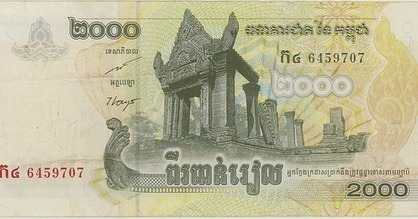
Preah Vihear Temple Affiliation: Hinduism Deity: Shiva Preah Vihear Temple (Khmer: ប្រាសាទព្រះវិហារ Prasat Preah Vihear) is an ancient Hindu temple built during the period of the Khmer Empire, that is situated atop a 525-metre (1,722 ft) cliff in the Dangrek Mountains, in the Preah Vihear Privince, Cambodia. In 1962, following a lengthy dispute between Cambodia and Thai over ownership, the International Court of Justice (ICJ) in The Hague ruled that the temple is in Cambodia. Affording a view for many kilometers across a plain, Prasat Preah Vihear has the most spectacular setting of all the temples built during the six-century-long Khmer Empire. As a key edifice of the empire's spiritual life, it was supported and modified by successive kings and so bears elements of several architectural styles. Preah Vihear is unusual among Khmer temples in being constructed along a long north-south axis, rather than having the conventional rectangular plan with orientation toward the east. The temple gives its name to Cambodia's Preah Vihear province, in which it is now located, as well as the Khao Phra Wihan National Park which borders it in Thailand's Sisaket province and through which the temple is most easily accessible. On July 7, 2008, Preah Vihear was listed as a UNESCO world Heritage Site https://www.instagram.com/p/B2jbZT_DtSs/?igshid=3tfp1yw7gmfy
0 notes
Text
Visit the holy Preah Vihear in Cambodia
Prasat Preah Vihear is a temple located on a mountain crest of Doudrk Mountain in Cambodia near the border with Thailand. The temple was named for Preah Vihear province, where it is located. In 2008, the temple was listed by UNESCO as a World Heritage Site.

The first temple was built in the early 9th century, used to worship Shiva. The relics found in this province indicate that this area was an important settlement of the Khmer Empire in the 12th century. Preah Vihear Temple was built on a fairly flat surface on the top of the mountain, 525 meters above the plain and 625 meters above sea level, which is 800 meters north-facing. This is a unique feature of Preah Vihear with an expansive layout of the entire North-South axis, which is very different from most other temples in Angkor period. The temple is a masterpiece of Khmer architecture, showing a high level of design, decorated with exquisite carvings and harmonious combination with the surrounding landscape. The architectural style of the temple is reflected in the iconic paintings on the door frame, roof ... with beautiful carvings. The architecture here has made curiosity with the carved beauty of the ancient man has left. The temple's most attractive attraction is the combination of nature and architecture. The early sunshine was not strong enough to dispel the mist below, creating a deep depression for the scene. A lot of mixed feelings mixed up in the place where the heavens are like here, watching the ancient temple with thrilling legends and magical beauty. Like other temples, Preah Vihear is still a replica of Mount Meru - the home of the gods in Hindu mythology.

The entire architecture of the temple stretches across five levels, with elevated elevations that are 120m lower than the south. Start at the first level is a 7m wide and fairly steep terrain, with a length of nearly 150m leading to the temple. Right above the stairs are two naga-headed serpents guarding the two sides. Next is a 50 meter yard, which ends with a stone staircase leading up to the throne. At the fourth level, the shrine dates back to the Baphuon period, the gate is intact, decorated with elaborate carvings. In a chapel here, the carved images of the legendary stirring of the immortal ocean of the two gods of good and evil spirits are presented strikingly on the gate. This is a masterpiece of the Preah Vihear temple. The fifth level is also the highest level separated from the fourth level via a large door frame. This is different from other levels that are always connected to each other through a long paved road. The architecture at this level is heavily influenced by the Koh Ker style. On either side of the main hall there are two long corridors leading to two rooms outside, believed to be the library where the monks study. In the middle is the main power although the rear has collapsed with large blocks of stone lying, but the center still retains its intact features with sturdy roofs. While the roof of most shrines at other levels has collapsed in part or completely. At present, the local people have converted to a Buddhist temple with monks, ready to bless the sincere visitors with a bit of virtue at will. Previously, the temple was built in the area near the border of Cambodia and Thailand and caused a dispute. On the Cambodian side, there is no entrance to the temple because of the large cliffs. At that time, people wanted to visit Preah Vihear temple to go around the Thai border. But after the international court ruled the temple completely belonged to Cambodia, the country just started clearing the way to the temple, helping visitors and visitors to visit the temple easier, more convenient without having to go to the territory of Thailand. The current status of Preah Vihear temple maintains its main architecture, but only maintains the main temple, the center of the temple. The pillars, enclosures were broken by past disputes. Domestic and foreign tourists visiting Cambodia's Preah Vihear Temple can admire the ancient architecture and the contiguous lands of the two countries. The border point is also a destination that many people enjoy.

To discover Preah Vihear and other beautiful attractions in Cambodia, please have a look at our Mekong river cruises: http://topmekongcruises.com/
0 notes
Text
Seven Tips With Thailand Travel
So far, all of our Uber rides have been 5 stars and the app is user-friendly. It beats walking down the street while waiting for a taxi or songthaew to drive by, especially if we're in a rush or headed to the airport. Uber is easy to book through its app and it's relief to have a car waiting right at our front door a few minutes later. There's no intimidating haggling involved, no waiting for other passengers to get on or off, and users can count on the driver using a meter. It's affordable like a songthaew (red truck taxi) but is cool and comfortable like a taxi. Uber has been a success in Bangkok and Phuket for some time now but found its way to Chiang Mai in November 2016. Times have changed somewhat, and it is now fairly common to see couples holding hands in public in the most modern urban areas." That said, kissing and cuddling in public (including in dark restaurants, on park benches, and on public transportation, places where Americans might not think much of assuming a nuzzly head-on-shoulder pose) is unwise in Thai culture. Some years ago, there was no touching between the sexes in public," Suwannathamma says. New Zealanders travelling or living in Thailand should have a comprehensive travel insurance policy in place that includes provision for medical evacuation by air. The situation has stabilised however we recommend exercising particular care in areas close to the border with Cambodia and at border crossings. Thai and Cambodian troops are deployed in this area and have on occasion engaged in armed conflict. In the north of the country, a Thai-Cambodia border dispute centred around the Preah Vihear temple (known as Khao Pra Viharn temple in Thailand) has led to hostilities and tensions in the past. There have been a number of explosive device incidents in Bangkok and other cities, including Phuket and Koh Samui in recent years. There is an ongoing threat of terrorism in Thailand Travel. Individuals may be detained for violation of these and other measures. Under the measures, authorities may restrict movement, public assembly or political gatherings and have prohibited the distribution of any information considered detrimental to Thailand's national security or public order. You should check local media and with your travel provider for further information. The Tourism Authority of Thailand website provides information for travellers including recommendations on the appropriate dress and behaviour during the mourning period. It is important that New Zealanders in Thailand fully respect and comply with the etiquette and protocols surrounding this period of royal mourning. Following the passing of His Majesty King Bhumibol Adulyadej an official mourning period of one year was announced from 14 October 2016. Boat trips between islands cost around 500THB (£10). A 12-15 hour bus journey from Bangkok to Phuket costs 1000THB (just over £20). A 10 hour bus journey from Bangkok to Chiang Mai on a pretty comfy sleeper coach costs around 500-600THB (or anywhere between £10-15).
0 notes
Text
Since the world saw Angelina Jolie swinging through the ruined temples of Cambodia as Lara Croft, the country has been crawling with tourists eager to get a better look at the places made famous by the film. In recent years, Siem Reap, a town that is close to a huge complex of ancient Buddhist and Hindu temples, is now a major tourist destination, with more than 120 hotels, from basic hostel to Ultra-DeLuxe. While there may be small pockets of opulence such as this, the majority of the country is still poor, and visitors to Cambodia should get out to see the reality of this beautiful country.
After several decades of civil war, and the genocide brought about by Pol Pot and the Khmer Rouge, Cambodia’s modern, violent history is fresh in the minds of the world. However, with the introduction of a new regime of democracy, the nation sits on the verge of a new revolution – as a popular travel destination. And this is mainly due to the jungle-covered ruins of Angkor Wat, and other places just like it. The ancient capital of the old Khmer Empire is also the world’s largest, single religious monument, and is one of only a handful of temples that have been uncovered in the dense jungle landscape. Hundreds of other beautiful, ancient temples and pagodas exist, buried under the growth of tropical jungle, and sometimes used as backdrops for major Hollywood blockbusters.
Over the years I have found myself in Cambodia on several occasions, both as soldier and tourist. The first time I went there was with the military as part of the UN resolution on foreign aid, to protect UN aid workers who were helping to get the country back on its feet. Unfortunately, I spent more time watching the jungle for former Khmer Rouge activists than watching the famous sites I have mentioned here, although in Phnom Penh I got to spend time around the city and explore a little. Thankfully, the horrors of the past are long gone, and the Khmer Rouge we encountered there no longer cause trouble. Cambodia has come a long way since the days of Pol Pot and the Khmer Rouge, and although it is not perfect, it’s a lot safer for tourists now.
From the ruins of Angkor Wat to the Killing Fields of Choeung Ek, you can really immerse yourself in the rich, yet violent history of Cambodia. Whether you are following in the footsteps of adventurers, or enjoying freshly baked bread in one of the delightful cafes of Siem Reap, it is almost impossible not to be affected by the stories of Cambodia. Tales of glory and of ruin, tragedy and joy, all are etched into the deathly silence of the stones, and shines from the friendly faces of the Khmer people. Wherever you travel in this once-devastated land, Cambodia is a country that leaves an unforgettable, indelible impression.
Top Spots for Tourists in Cambodia

Sunrise at Angkor Wat
In Siem Reap, lies the ancient temple of Angkor Wat. Probably the most famous of all places in the country, people show up in their thousands to watch the sunrise at 5:30am. While many people crowd the walkways, jostling for the best shot, if you get off the main walkway and sit on the steps of the outpost buildings, you are almost guaranteed a better view, with less people. Built over the course of more than thirty years, Angkor Wat was the 12th century home of King Suryavarman II after he died.
Completely buried by jungle until it was discovered by French colonists in the 1800’s, what they uncovered is now considered as one of the Wonders of the World. The well-preserved temple has numerous bas-relief walls that depict the many levels of heaven and hell, some of which are quite gruesome, as well as more than 1,800 seductive Dancing Maidens carvings. The temple is surrounded by a huge rectangular lake, and rises up on three terraces to the central shrine and tower. The temple reflects the traditional Khmer design of the “temple mountain” which is a representation of Mount Meru, the home of the gods in Hinduism.

Angkor Thom
Locally mispronounced as “Uncle Tom”, this temple has not been restored in the way Angkor Wat has, though it has several interesting features. The main feature of the temple is the entrance bridge, which is flanked by 54 stone-carved warriors who appear to be playing a tug-of-war game with the sacred Naga Snake. Many of the warriors’ heads are missing, stolen by looters after the war in Vietnam, some of which have been recovered and are now in museums across the U.S. The bas-reliefs here are mainly of people playing chess, cooking, and having babies, and one even depicts two monkeys performing sexual acts, known locally as the “Monkey 69”.

Ta Prohm
The temple that was used in the Tomb Raider film, this ancient place was left completely undisturbed by restoration teams, and is still full of crumbling walls intertwined with thick tree roots. It was left as it was found, to allow tourists to see the state in which many of the temples in the area were discovered.

Artisan’s Angkor
Artisan’s Angkor is a trade school for disadvantaged Cambodians in Siem Reap, where the students make all kinds of local handicrafts, which fly off the shelves of the colorful school store as fast as they can make them. The school makes everything from silver-plated ornamental boxes to vividly colored scarves made of local silk, and it is all of high quality.
Downtown Siem Reap
Take a Tuk-Tuk to Downtown Siem Reap; This nimble mode of transportation – essentially a 4 person carriage pulled by motorcycle – congests every alley, lane and road in Siem Reap. It takes just a few minutes (and about $2) to get to…..

Pub Street and Siem Reap Night Market
This area of Downtown Siem Reap has a nighttime vibe that is comparable to that of New Orleans at Mardi Gras. There are dozens of restaurants selling all kinds of food, both local and foreign, and spas where you can relax, get a massage, or try the traditional Cambodian J’Pong heat and herbal treatment. Most of the spas have pools inside where you can get a “fish pedicure”, which can be a little ticklish as the small fish eat the dead skin on your feet. The night market is full of deals on items you can find in many such markets across Asia, but a little searching can be rewarded with some excellent finds.
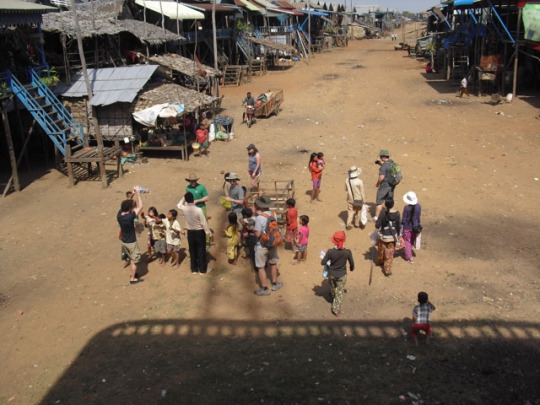
Tonlé Sap
Tonlé Sap is the largest freshwater lake in Cambodia and South East Asia, and is of major importance to the country. The lake is subject to the changes of the seasons, and shrinks or expands depending on the monsoon rains. Dry season in Cambodia is from November to May, and the lake drains into the Mekong River at Phnom Penh. In the monsoon season, the lake changes direction, and fills with water to make an enormous lake that is the home to numerous Vietnamese and Cham communities that live in floating villages around the lake.

Preah Vihear
Preah Vihear is a striking Khmer temple, dramatically set on a 1,722-foot cliff in the Dângrêk Mountains. The views from the top expand over lowland Cambodia, with the peak of Phnom Kulen watching silently in the distance. Spread over more than 2,000 feet, the temple’s five Gopuras are comprised of four levels and four courtyards, all of which are decorated with intricate carvings. Constructed mainly between the 11th and 12th centuries, the temple was dedicated to the Hindu god Shiva. Set on the border between Cambodia and Thailand, ongoing territorial disputes between the two countries have closed access to the temple from the Thai entrance.

Banteay Srei
Although officially part of the Angkor complex, Banteay Srei lies 25 km (15 miles) north-east of the main group of temples, and therefore often considered a separate Cambodia attraction. The temple was completed in 967 AD and is built largely of red sandstone, a medium that lends itself to the elaborate decorative wall carvings which are still clearly visible today. Banteay Srei is the only major temple at Angkor not built for a king, instead it was constructed by one of king Rajendravarman’s counselors, Yajnyavahara.
Mondulkiri
Mondulkiri is a wild, sparsely populated area of Cambodia, dotted with rolling hills, jungles, waterfalls, and valleys. The region is home to some of the country’s most rare and endangered wildlife, including leopards, water buffalo, and elephants. Almost half of Mondulkiri’s population belongs to the Bunong minority group, who hunt for most of their food. It’s a fantastic region for visiting traditional villages and interacting with elephants in their natural habitat. The cool climate, stunning scenery and wildlife-viewing opportunities make it a perfect area for trekking and hiking.

Popokvil Waterfall
Set in Bokor National Park, Popokvil Waterfall is a stunning two-tiered waterfall, which looks particularly gorgeous during the rainy season. Although the appearance of the surrounding rainforest has been somewhat marred by the construction of a huge casino on the hill summit, the area is still quite pretty. The waterfall takes its name from an expression meaning ‘swirling clouds’, perhaps due to the ever-present mist that surrounds it. It’s a great place to stop for a refreshing swim and, if you’re lucky, catch a glimpse of the endangered animals that live in the area, such as the pig-tailed macaque and the Malayan sun bear.
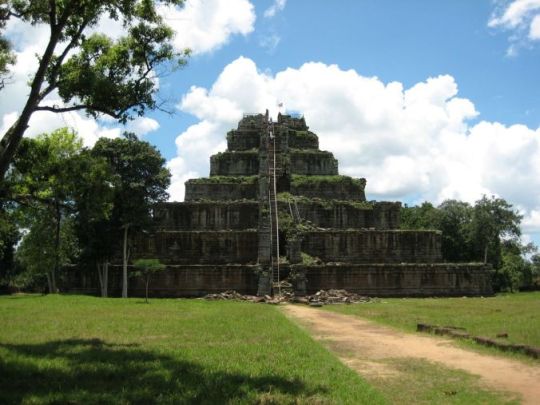
Koh Ker
Formerly the capital of the Khmer Empire from 928 to 944 AD, the site has some spectacular buildings and immense sculptures, and is dominated by the 30-meter-tall temple mountain of Prasat Thom. Rising high above the surrounding jungle, the temple is topped by a giant Garuda (a mythical half-man, half-bird creature). Abandoned and left to the jungle for almost a thousand years, the temple can be likened more to ancient Mayan ruins than typical Khmer architecture, and the encroachment of the jungle and its wildlife on Koh Ker only adds to the site’s sense of mystery.

Drive Route 6 to Phnom Penh
The largest city in Cambodia, Phnom Penh has been the country’s capital since the French colonial era. Once called the “Pearl of Asia”, it is considered to be one of the prettiest cities in Indo-China, though it is still recovering from wars and revolutions. Sitting on the Mekong River, the city dates back to the 15th century, and the French influence can still be seen in the architecture of the city. From the glittering Royal Palace and crowded night markets to the sophisticated restaurants and bars, Phnom Penh’s beauty is complex, and realized slowly by visitors as they tour the city.
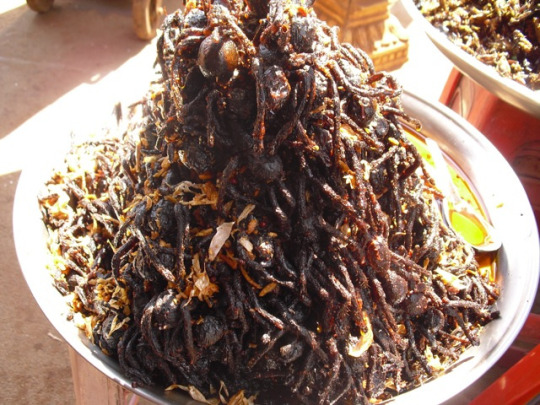
Eat A Spider (or watch someone else do it)
There’s a stop along Route 6 Cambodia that features platters of fried tarantulas, crickets and birds. There are also bananas and mangos for the non insect eater. Believe it or not, spiders actually taste nice. If you have ever eaten crickets or deep fried locusts (I remember when that was a phase in the north of England in the late ’80s), then it is not much different. Trying new foods is all part of the charm of a new country. Just go for it!
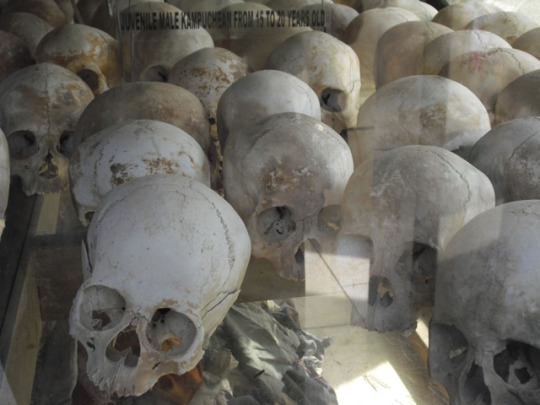
Killing Fields and Tuol Sleng Genocide Museum
15 kilometers from Phnom Penh, the Killing Fields is a monument like no other in the world. The monument is filled with bones and skulls from one of the hundreds of killing fields across the country. The Cambodian government decided to leave majority of these mass graves alone and undisturbed, making this one both a monumental cemetery and a hallowed ground.

Nearby is the Tuol Sleng Genocide Museum, which was once a peaceful high school and now is a memorial to those who died there. Between 1975 and 1979, the school became a torture and interrogation center for the Khmer Rouge, from which very few survived. Doctors, professors, clergymen, and other high-value professionals were rounded up and chained, electrocuted, dismembered, or beaten to death at the order of Cambodian dictator, Pol Pot. Those who survived the torture were taken out to the Killing Fields, and executed. While it is a hard place to visit, like many other Holocaust Museums, it is there to remind people of the horrors of dictatorship, and make sure it can never happen again.
You can probably put together a whole trip based on this list, although if you travel to Cambodia to do all of these, it may take you several weeks. Go there, and enjoy this beautiful land as it recovers from the decades of war and hardship. For pretty soon, it will be as popular and tourist-oriented as places like Thailand, Bali, and Boracay!
The Most Memorable Attractions In Cambodia Since the world saw Angelina Jolie swinging through the ruined temples of Cambodia as Lara Croft, the country has been crawling with tourists eager to get a better look at the places made famous by the film.
0 notes
Text
New Initiative to Resolve Preah Vihear Temple Dispute
Thai MPs urge talks with Cambodia to reopen Preah Vihear Temple, closed since 2008 amid border disputes and pandemic, eyeing tourism and national security.
via Bangkok Post, 17 December 2023: Thai MPs from Si Sa Ket have petitioned Prime Minister Srettha Thavisin for dialogue with Cambodia to reopen travel to Preah Vihear Temple, closed since 2008 due to border disputes and COVID-19. The temple’s conflict, escalated after UNESCO World Heritage registration in 2008, saw military tensions and international court involvement. Thai officials view…

View On WordPress
0 notes
Text
Preah Vihear: From Conflict Zone to Must-See Heritage Site
via Khmer Times, 19 September 2023: Preah Vihear, once a flashpoint in Cambodian-Thai relations, now thrives as a UNESCO World Heritage site, attracting thousands of tourists.
via Khmer Times, 19 September 2023: After decades of territorial disputes with Thailand, the Preah Vihear temple in Cambodia has emerged as a top heritage attraction, drawing thousands of tourists monthly thanks to international legal rulings, dedicated local guardians, and improved infrastructure. “After constructing new infrastructure around 2017 and 2018, Preah Vihear began attracting a lot…

View On WordPress
#Preah Vihear (province)#Preah Vihear (temple)#Preah Vihear border dispute#tourism#Unesco World Heritage
0 notes
Text
Cambodia and Thailand’s Cultural Rivalry Has Serious Implications
via the Diplomat, 12 May 2023: The cultural similarities between Thailand and Cambodia have historically caused conflict between the two nations which has recently been reinforced by a nationalist sentiment related to the ownership of their respective cul
via the Diplomat, 12 May 2023: The cultural similarities between Thailand and Cambodia have historically caused conflict between the two nations which has recently been reinforced by a nationalist sentiment related to the ownership of their respective cultural heritages, e.g. Preah Vihear. Among the countries of Southeast Asia, few share more in common culturally than Thailand and Cambodia. In…

View On WordPress
0 notes
Photo

Preah Vihear - Following a lengthy dispute between Cambodia and Thailand over ownership, the International Court of Justice in The Hague ruled that the temple is in Cambodia. 🇰🇭📸😊 Greetings and have a great day all. 🤗 Save, Share and Tag this pic. 💾 I love to hear your comments. ✒ ~~~ Affording a view for many kilometers across a plain, Prasat Preah Vihear has the most spectacular setting of all the temples built during the six-century-long Khmer Empire. As a key edifice of the empire's spiritual life, it was supported and modified by successive kings and so bears elements of several architectural styles. Preah Vihear is unusual among Khmer temples in being constructed along a long north–south axis, rather than having the conventional rectangular plan with orientation toward the east. The temple gives its name to Cambodia's Preah Vihear province, in which it is now located, as well as the Khao Phra Wihan National Park which borders it in Thailand's Sisaket province, though it is no longer accessible from Thailand. On 7 July, 2008, Preah Vihear was listed as a UNESCO World Heritage Site. . . #asianwanderlust#discoverasia#asiatour#asiatravel#loveasia #seasia#seasiatravel#southeastasiatravel#southeastasiatrip#travelinasia#travelsoutheastasia#visitseasia#visitasia#beautifulcambodia#bestofcambodia#cambodge#cambodiaphotos#cambodiatourism#cambodiatravel#cambodiatrip#cambodia🇰🇭#camboya#explorecambodia#ig_cambodia#igerscambodia#kambodscha#kingdomofwonder#travelcambodia#visitcambodia#tlasia (at Preah Vihear) https://www.instagram.com/p/CQxR7o4MPov/?utm_medium=tumblr
#asianwanderlust#discoverasia#asiatour#asiatravel#loveasia#seasia#seasiatravel#southeastasiatravel#southeastasiatrip#travelinasia#travelsoutheastasia#visitseasia#visitasia#beautifulcambodia#bestofcambodia#cambodge#cambodiaphotos#cambodiatourism#cambodiatravel#cambodiatrip#cambodia🇰🇭#camboya#explorecambodia#ig_cambodia#igerscambodia#kambodscha#kingdomofwonder#travelcambodia#visitcambodia#tlasia
0 notes
Photo
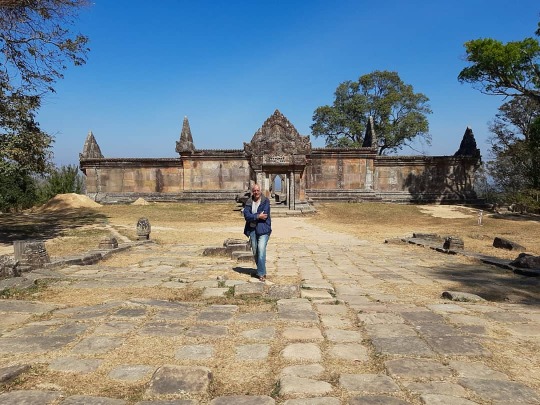
Preah Vihear - Following a lengthy dispute between Cambodia and Thailand over ownership, the International Court of Justice in The Hague ruled that the temple is in Cambodia. 🇰🇭📸😊 Greetings from Preah Vihear in Cambodia. Have a fantastic day all. ~~~~ I love to hear your comments. ✒ Tag your friends. 👥 Save this pic. 💾 Share it please. 🗣💐 ~~~~ Affording a view for many kilometers across a plain, Prasat Preah Vihear has the most spectacular setting of all the temples built during the six-century-long Khmer Empire. As a key edifice of the empire's spiritual life, it was supported and modified by successive kings and so bears elements of several architectural styles. Preah Vihear is unusual among Khmer temples in being constructed along a long north–south axis, rather than having the conventional rectangular plan with orientation toward the east. The temple gives its name to Cambodia's Preah Vihear province, in which it is now located, as well as the Khao Phra Wihan National Park which borders it in Thailand's Sisaket province, though it is no longer accessible from Thailand. On 7 July, 2008, Preah Vihear was listed as a UNESCO World Heritage Site. . . . . #wandertheworld #destinationasia #asiatravels #thisisasia #discoverasia #asia_vacations #travelinasia #beautifulseasia #visitasia #asiatrip #southeastasiatrip #seasia #southeastasiatravel #seasiatravel #travelsoutheastasia #kingdomofwonder #visitcambodia #travelcambodia #explorecambodia #beautifulcambodia #cambodia🇰🇭 #cambodiatrip #cambodiatravel #cambodiatourism #igerscambodia #cambodiaphotos #kambodscha #camboya #cambodge #preahvihear (at ប្រាសាទព្រះវិហារ Preah Vihear Temple) https://www.instagram.com/p/CLWALg-sgcY/?igshid=1qki2u59f8azj
#wandertheworld#destinationasia#asiatravels#thisisasia#discoverasia#asia_vacations#travelinasia#beautifulseasia#visitasia#asiatrip#southeastasiatrip#seasia#southeastasiatravel#seasiatravel#travelsoutheastasia#kingdomofwonder#visitcambodia#travelcambodia#explorecambodia#beautifulcambodia#cambodia🇰🇭#cambodiatrip#cambodiatravel#cambodiatourism#igerscambodia#cambodiaphotos#kambodscha#camboya#cambodge#preahvihear
0 notes
Photo
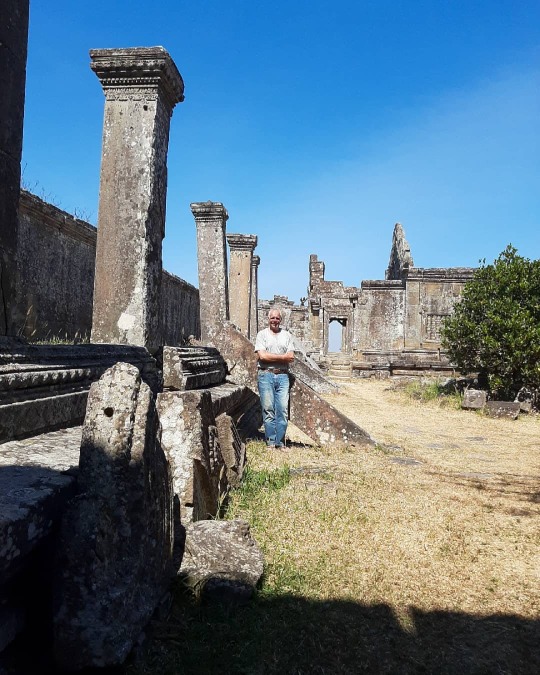
Preah Vihear - Following a lengthy dispute between Cambodia and Thailand over ownership, the International Court of Justice in The Hague ruled that the temple is in Cambodia. 🇰🇭📸😊 Greetings and have a great day all. 🤗 Save, Share and Tag this pic. 💾 I love to hear your comments. ✒ ~~~~ Affording a view for many kilometers across a plain, Prasat Preah Vihear has the most spectacular setting of all the temples built during the six-century-long Khmer Empire. As a key edifice of the empire's spiritual life, it was supported and modified by successive kings and so bears elements of several architectural styles. Preah Vihear is unusual among Khmer temples in being constructed along a long north–south axis, rather than having the conventional rectangular plan with orientation toward the east. The temple gives its name to Cambodia's Preah Vihear province, in which it is now located, as well as the Khao Phra Wihan National Park which borders it in Thailand's Sisaket province, though it is no longer accessible from Thailand. On 7 July, 2008, Preah Vihear was listed as a UNESCO World Heritage Site. . . #asiatour#asiatravel#loveasia #seasia#seasiaig #seasiatravel#southeastasiatravel#southeastasiatrip#thisisasia#travelinasia#travelsoutheastasia#visitseasia#visitasia#beautifulcambodia#bestofcambodia#cambodge#cambodiaphotos#cambodiatourism#cambodiatravel#cambodiatrip#cambodia🇰🇭#camboya#explorecambodia#ig_cambodia#igerscambodia#kambodscha#kingdomofwonder#travelcambodia#visitcambodia #khmerempire (at Preah Vihear Province) https://www.instagram.com/p/CPkYpMrMcOH/?utm_medium=tumblr
#asiatour#asiatravel#loveasia#seasia#seasiaig#seasiatravel#southeastasiatravel#southeastasiatrip#thisisasia#travelinasia#travelsoutheastasia#visitseasia#visitasia#beautifulcambodia#bestofcambodia#cambodge#cambodiaphotos#cambodiatourism#cambodiatravel#cambodiatrip#cambodia🇰🇭#camboya#explorecambodia#ig_cambodia#igerscambodia#kambodscha#kingdomofwonder#travelcambodia#visitcambodia#khmerempire
0 notes
Photo
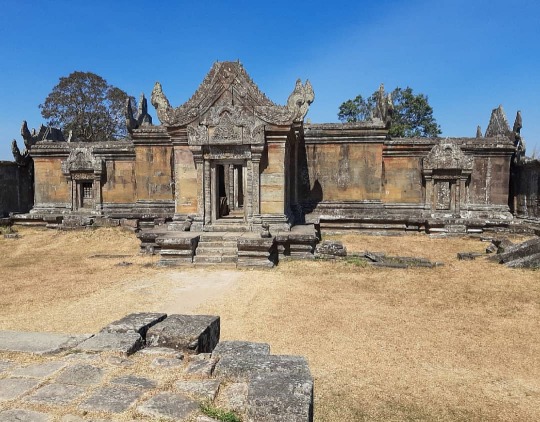
Preah Vihear - Following a lengthy dispute between Cambodia and Thailand over ownership, the International Court of Justice in The Hague ruled that the temple is in Cambodia. 🇰🇭📸😊 Greetings and have a great day all. 🤗 Save, Share and Tag this pic. 💾 I love to hear your comments. ✒ ~~~~ Affording a view for many kilometers across a plain, Prasat Preah Vihear has the most spectacular setting of all the temples built during the six-century-long Khmer Empire. As a key edifice of the empire's spiritual life, it was supported and modified by successive kings and so bears elements of several architectural styles. Preah Vihear is unusual among Khmer temples in being constructed along a long north–south axis, rather than having the conventional rectangular plan with orientation toward the east. The temple gives its name to Cambodia's Preah Vihear province, in which it is now located, as well as the Khao Phra Wihan National Park which borders it in Thailand's Sisaket province, though it is no longer accessible from Thailand. On 7 July, 2008, Preah Vihear was listed as a UNESCO World Heritage Site. . . #asiatour#asiatravel#loveasia #seasia#seasiaig #seasiatravel#southeastasiatravel#southeastasiatrip#thisisasia#travelinasia#travelsoutheastasia#visitseasia#visitasia#beautifulcambodia#bestofcambodia#cambodge#cambodiaphotos#cambodiatourism#cambodiatravel#cambodiatrip#cambodia🇰🇭#camboya#explorecambodia#ig_cambodia#igerscambodia#kambodscha#kingdomofwonder#travelcambodia#visitcambodia#angkortemples (at Preah Vihear Province) https://www.instagram.com/p/CPfEnGdMIBL/?utm_medium=tumblr
#asiatour#asiatravel#loveasia#seasia#seasiaig#seasiatravel#southeastasiatravel#southeastasiatrip#thisisasia#travelinasia#travelsoutheastasia#visitseasia#visitasia#beautifulcambodia#bestofcambodia#cambodge#cambodiaphotos#cambodiatourism#cambodiatravel#cambodiatrip#cambodia🇰🇭#camboya#explorecambodia#ig_cambodia#igerscambodia#kambodscha#kingdomofwonder#travelcambodia#visitcambodia#angkortemples
0 notes